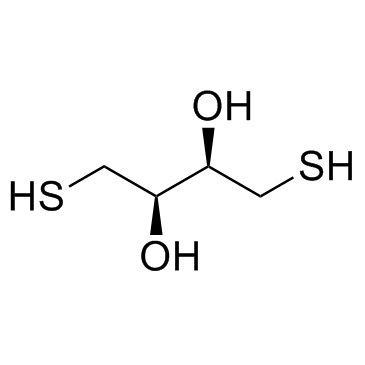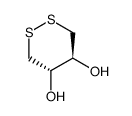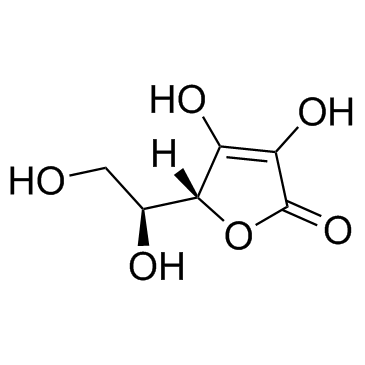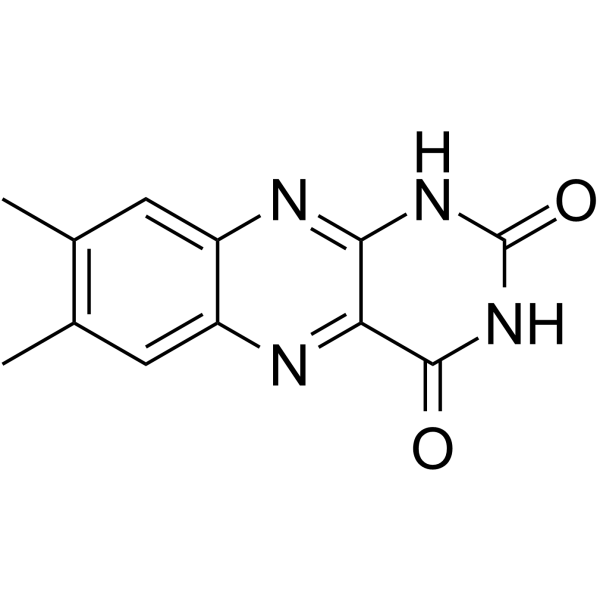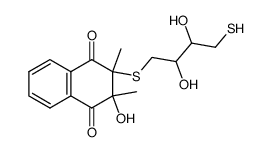3483-12-3
| Name | 1,4-dithiothreitol |
|---|---|
| Synonyms |
DITHIOERYTHRITOL
DL-1,4-Dithiothreitol DTT 1,4-Dithiothreitol 1,4-Bissulfanylbutane-2,3-diol DL-1,4-Dimercapto-2,3-dihydroxybutane 2,3-Butanediol, 1,4-dimercapto-, (2S,3S)- THREO-2,3-DIHYDROXY-1,4-DITHIOLBUTANE 1,4-Disulfanyl-2,3-butanediol Threitol, 1,4-dithio- (R*,R*)-1,4-DIMERCAPTO-2,3-BUTANEDIOL EINECS 222-468-7 (2S,3S)-1,4-Disulfanyl-2,3-butanediol Cleland's Reagent DL-Dithiothreitol (2R*,3S*)-1,4-dimercaptobutane-2,3-diol (2S,3S)-1,4-Disulfanylbutane-2,3-diol threo-2,3-Dihydroxy-1,4-butanedithiol dithiothreitol (2R*,3S*)-1,4-dimercapto-2,3-butanediol Sputolysin threo-1,4-Dimercapto-2,3-butanediol 1,4-Disulfanylbutane-2,3-diol 2,3-Butanediol, 1,4-dimercapto- MFCD00004877 (±)-1,4-Dimercapto-2,3-butanediol |
| Description | DTT is a small-molecule redox reagent. |
|---|---|
| Related Catalog | |
| References |
| Density | 1.3±0.1 g/cm3 |
|---|---|
| Boiling Point | 364.5±42.0 °C at 760 mmHg |
| Melting Point | 38-43ºC |
| Molecular Formula | C4H10O2S2 |
| Molecular Weight | 154.251 |
| Flash Point | 174.2±27.9 °C |
| Exact Mass | 154.012222 |
| PSA | 118.06000 |
| LogP | 0.07 |
| Vapour Pressure | 0.0±1.8 mmHg at 25°C |
| Index of Refraction | 1.579 |
| Storage condition | 2-8°C |
| Stability | Stability Stable, but heat sensitive. Incompatible with strong oxidizing agents. Keep frozen at -20 to -10 C. |
| Water Solubility | H2O: 50 mg/mL, clear, colorless | freely soluble |
CHEMICAL IDENTIFICATION
HEALTH HAZARD DATAACUTE TOXICITY DATA
|
| Symbol |

GHS07 |
|---|---|
| Signal Word | Warning |
| Hazard Statements | H302-H315-H319-H335 |
| Precautionary Statements | P261-P305 + P351 + P338 |
| Personal Protective Equipment | dust mask type N95 (US);Eyeshields;Faceshields;Gloves |
| Hazard Codes | Xn:Harmful |
| Risk Phrases | R22;R36/37/38 |
| Safety Phrases | S26-S37/39 |
| RIDADR | UN 3335 |
| WGK Germany | 3 |
| RTECS | EK1610000 |
| HS Code | 2930909090 |
| Precursor 0 | |
|---|---|
| DownStream 8 | |
| HS Code | 2930909090 |
|---|---|
| Summary | 2930909090. other organo-sulphur compounds. VAT:17.0%. Tax rebate rate:13.0%. . MFN tariff:6.5%. General tariff:30.0% |

